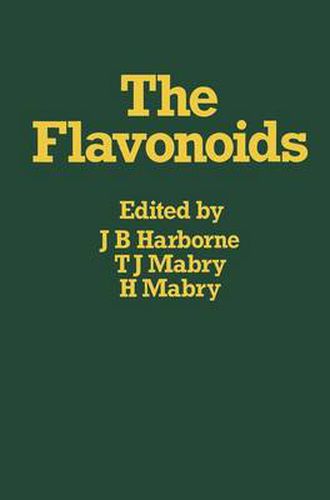Readings Newsletter
Become a Readings Member to make your shopping experience even easier.
Sign in or sign up for free!
You’re not far away from qualifying for FREE standard shipping within Australia
You’ve qualified for FREE standard shipping within Australia
The cart is loading…






The flavonoids, one of the most numerous and widespread groups of natural constituents, are important to man not only because they contribute to plant colour but also because many members (e.g. coumestrol, phloridzin, rotenone) are physiologically active. Nearly two thousand substances have been described and as a group they are universally distributed among vascular plants. Although the anthocyanins have an undisputed function as plant pigments, the raison d'etre for the more widely distributed colourless flavones and flavonols still remains a mystery. It is perhaps the challenge of discovering these yet undisc10sed functions which has caused the considerable resurgence of interest in flavonoids during the last decade. This book attempts to summarize progress that has been made in the study of these constituents since the first comprehensive monograph on the chemistry of the flavonoid compounds was published, under the editorship of T. A. Geissman, in 1962. The present volume is divided into three parts. The first section (Chapters 1-4) deals with advances in chemistry, the main emphasis being on spectral techniques to take into account the re cent successful applications of NMR and mass spectral measurements to structural identifications. Recent developments in isolation techniques and in synthesis are also covered in this section. Advances in chemical knowledge of individual c1asses of flavonoid are mentioned inter aha in later chapters of the book.
$9.00 standard shipping within Australia
FREE standard shipping within Australia for orders over $100.00
Express & International shipping calculated at checkout
The flavonoids, one of the most numerous and widespread groups of natural constituents, are important to man not only because they contribute to plant colour but also because many members (e.g. coumestrol, phloridzin, rotenone) are physiologically active. Nearly two thousand substances have been described and as a group they are universally distributed among vascular plants. Although the anthocyanins have an undisputed function as plant pigments, the raison d'etre for the more widely distributed colourless flavones and flavonols still remains a mystery. It is perhaps the challenge of discovering these yet undisc10sed functions which has caused the considerable resurgence of interest in flavonoids during the last decade. This book attempts to summarize progress that has been made in the study of these constituents since the first comprehensive monograph on the chemistry of the flavonoid compounds was published, under the editorship of T. A. Geissman, in 1962. The present volume is divided into three parts. The first section (Chapters 1-4) deals with advances in chemistry, the main emphasis being on spectral techniques to take into account the re cent successful applications of NMR and mass spectral measurements to structural identifications. Recent developments in isolation techniques and in synthesis are also covered in this section. Advances in chemical knowledge of individual c1asses of flavonoid are mentioned inter aha in later chapters of the book.